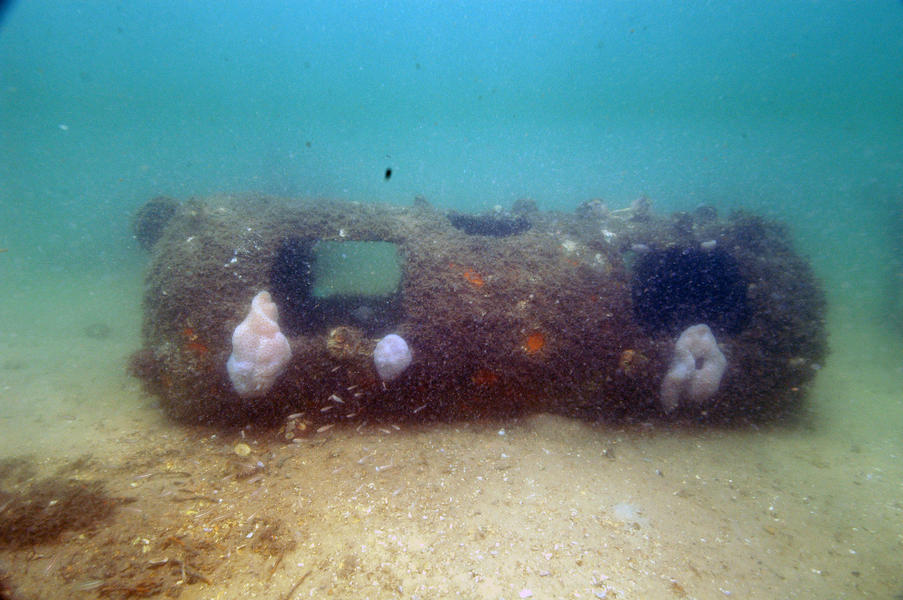St. Andrews Aquatic Preserve and the surrounding Panama City Beach area are an increasingly popular tourist destination, especially in the summer months. Sugar white sand beaches, lush seagrass beds and lots of other tourist attractions bring in visitors from near and far. In 2013, St. Andrews State Park was the fourth most visited state park in Florida with 893,102 visitors. Shell Island is an extremely popular beach, swimming and snorkeling destination for visitors and locals alike. St. Andrews Aquatic Preserve encourages sustainable use of natural resources while minimizing user impacts.
The area surrounding St. Andrews Aquatic Preserve is one of the only relatively undeveloped areas in Panama City Beach and provides many opportunities for the public to enjoy the aquatic preserve’s natural resources. Popular recreational activities include but are not limited to boating, personal watercraft use, fishing, kayaking, snorkeling and swimming. Public support and interagency participation are imperative to protecting natural resources. Public participation in resource management enables users to understand the important ecological and economic issues of the system.
Addressing issues such as marine debris is important in assessing the overall health of the aquatic preserve. Marine debris presents a real and chronic threat to wildlife and public safety; entanglement, ingestion, and the release of toxins into the environment are issues related to debris. Additionally, the presence of debris detracts from the aesthetic value of natural landscapes. Marine debris can include paper and plastic products, construction debris, derelict vessels, and derelict aquaculture and fisheries gear.
Historically, anglers and divers in the Bay County area have placed materials on the bottom of St. Andrews Bay just north of Shell Island to create an artificial reef system. The artificial reefs were placed inshore to provide easily accessible focal sites moderately protected from bad weather (near the Panama City main inlet channel). Sometime in the mid-1970s, a 150-foot-long barge, called the “Spanish Shanty barge” or “Tar barge,” sank in 19 feet of water in St. Andrews Bay. Also in the area are several lifeboats that were reportedly taken from Liberty ships (a class of cargo ship built during WWII) that were sunk offshore as artificial reefs around 1977. Since these existing reefs were in the area, local fishermen, tour boat operators and divers added material to nearby sites, perhaps thinking they were permitted reef sites.
A wide variety of fouled marine debris now covers a large portion of the bay bottom. The materials used are not considered appropriate as artificial reef substrates. Many of these materials are near very high density seagrass beds and pose a risk to this valuable underwater habitat. The inspection of the area indicated the materials to be composed of a variety of disposed items, including but not limited to shopping carts, folding tables, plastic crates, cinder blocks, appliances and children’s car seats. The combined effects of deterioration over time of the materials and settlement into the sediment severely limits the reef habitat value of the materials. This area is currently more of a scattered debris field than an organized functional artificial reef. St. Andrews Aquatic Preserve will continue to work with other organizations to determine the best course of action for the debris field site. Possible remedies could include the removal of the marine debris objects while locating appropriate sites for an approved artificial reef structure.
Dolphin encounter tours have become increasingly popular within St. Andrews Bay. While many dolphin tour companies advertise only dolphin sightseeing tours and adhere to strict guidelines, some allow illegal behaviors, such as in-water interactions and the feeding of wild dolphins. Feeding wild dolphins can cause the dolphin to rely on begging for food from humans, upsetting their natural role as hunters and altering their diets. This behavior also puts the human at risk, since dolphins sometimes become aggressive when seeking food and are known to bite when teased. St. Andrews Aquatic Preserve will work with dolphin tour companies to educate them on appropriate interactions with wild dolphins as well as the penalties and dangers of feeding and harassing wild dolphins.



